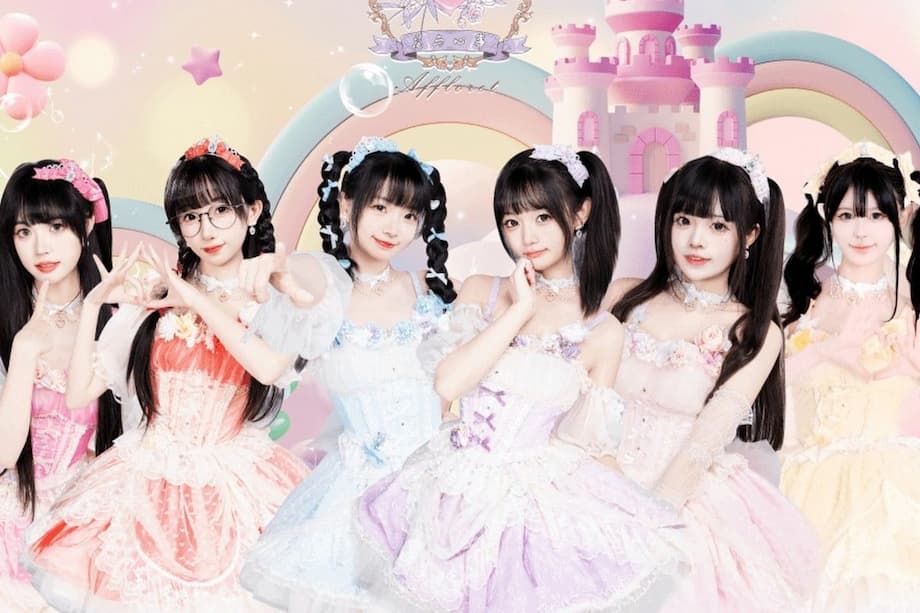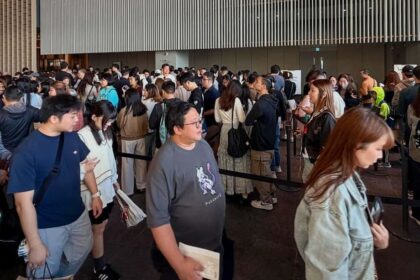The Rise of Chinese Amateur Idol Groups: Japan’s Cultural Blueprint
On a recent weekend in Shanghai, the air inside a small club pulsed with excitement. Dozens of young fans waved glow sticks and danced in unison, their eyes fixed on the stage where Chinese amateur girl groups performed. Dressed in frilly dresses and Lolita-inspired outfits, the singers belted out songs in Japanese, their choreography and stage presence echoing the unmistakable influence of Japan’s globalized idol culture. This scene, once rare in China, is now emblematic of a rapidly growing underground movement that is reshaping youth entertainment and fandom across the country.
- The Rise of Chinese Amateur Idol Groups: Japan’s Cultural Blueprint
- What Defines the Underground Idol Scene?
- Tracing the Roots: How Japanese Idol Culture Took Hold in China
- How Does Chinese Idol Culture Differ from Japan and Korea?
- The Role of Fan Culture and Online Communities
- Challenges and Controversies: Navigating Public Perception
- Broader Implications: Youth Culture, Identity, and Globalization
- In Summary
What began as a niche subculture has exploded since the end of pandemic restrictions. According to Chinese media, the number of underground idol groups in China soared from around 40 in 2023 to more than 250 by March 2025. These groups, often self-managed and performing in small venues, are drawing inspiration from Japanese pop (J-pop) idols, blending imported aesthetics with local creativity and ambition.
What Defines the Underground Idol Scene?
Unlike their mainstream counterparts, underground idol groups operate outside the major entertainment companies and glossy TV shows. Their performances are intimate, often staged in clubs or at fan conventions, and their fan interactions are direct and personal. After shows, fans line up for “perks meetings”—paid sessions where they can chat with idols, take photos, and collect autographs. A signed photo and a two-minute conversation typically cost about 100 yuan (US$14), making these encounters accessible yet exclusive.
These events are not just about music; they are about building a community. Fans, known as “wotaku” (a term borrowed from Japanese subculture), learn ritualistic dances called “wotagei” to support their favorite idols. The connection is emotional, with both idols and fans valuing authenticity and self-expression over mainstream acceptance. As one Hong Kong idol group member explained, outsiders often misunderstand the scene, thinking it is about appearance or sexuality, but for participants, it is about performance, personality, and genuine interaction.
Idols often adopt Japanese stage names and anime-inspired personas, further blurring the lines between reality and fantasy. The fashion—Lolita dresses, school uniforms, and colorful accessories—draws heavily from Japanese trends, while the music is often sung in Japanese, even if the performers themselves are not fluent. This deliberate mimicry is both homage and strategy, tapping into the global appeal of Japanese pop culture while creating a unique Chinese iteration.
Tracing the Roots: How Japanese Idol Culture Took Hold in China
Idol culture as we know it began in Japan in the 1970s, with young performers—often teenage girls—groomed to become multi-talented entertainers. The phenomenon spread to South Korea, where K-pop idols became global superstars, and eventually to China, where both official and underground scenes have flourished. The Japanese model, however, remains the blueprint for many Chinese amateur groups.
One reason for this enduring influence is the broader popularity of ACG (Anime, Comic, Game) culture in China. Platforms like Bilibili, inspired by Japan’s Niconico, have become hubs for young fans of animation, comics, and games. By 2015, China’s ACG community was estimated at over 200 million people, most of them digital natives under 24. Brands from KFC to Nike have embraced this trend, using anime characters and Japanese aesthetics in their marketing to connect with younger consumers.
In this environment, Japanese idol culture found fertile ground. The appeal lies in its blend of cuteness, accessibility, and participatory fandom. As one academic analysis notes, underground idols in China mirror their Japanese counterparts not just in style but in their economic model—earning income through fan events, merchandise, and direct engagement rather than mass media exposure.
Cross-Border Inspirations and Local Adaptations
The influence of Japanese idols is not limited to mainland China. In Hong Kong, for example, performers like Rika Woo have bridged traditional Cantonese opera with J-pop, donning elaborate costumes for opera and switching to J-pop outfits for idol performances. Woo’s journey illustrates the adaptability of idol culture, as she and her group Otome Syndream debuted in Japan before gaining recognition at local music festivals in Hong Kong. Despite economic challenges and competition from overseas events, Woo’s story shows how idol culture can serve as a bridge between generations and traditions.
Meanwhile, Hong Kong’s underground idol scene, which began around 2015, remains smaller than those in Taiwan or Japan but is fiercely devoted. Fans and idols alike emphasize that the focus is on performance and connection, not appearance or sexuality. Industry norms forbid private meetings or physical contact, and the community values authenticity and self-expression.
How Does Chinese Idol Culture Differ from Japan and Korea?
While Chinese underground idol groups borrow heavily from Japanese aesthetics and fan practices, there are notable differences. In Japan, the idol industry is highly structured, with strict rules governing behavior and image. The “cheki” (Polaroid photo) culture, where fans pay for instant photos with idols, is a staple of Japanese fan events. In China, similar practices exist, but the scene is less regulated and more grassroots, allowing for greater experimentation and diversity.
Korean idol culture, by contrast, is dominated by large entertainment companies that invest heavily in training, production, and global marketing. K-pop idols are known for their polished performances and group personas, with less emphasis on direct fan interaction outside of official events. The Chinese underground scene, in comparison, is more accessible and participatory, with fans playing an active role in supporting and promoting their favorite groups.
As one Reddit user observed, fashion and makeup styles also differ between the three countries, with Chinese idols often blending Japanese and Korean influences while adding their own local twists. The result is a vibrant, hybrid culture that reflects the globalized nature of youth entertainment in East Asia.
The Role of Fan Culture and Online Communities
Fan engagement is at the heart of the underground idol phenomenon. Research on Chinese idol-nurturing reality shows—where audiences vote to create new groups—shows that fans are motivated by a mix of social interaction, suspense, and emotional investment in contestants’ personalities and abilities. Younger viewers, especially those under 20, are particularly engaged, often forming online communities to support their idols through voting, streaming, and merchandise purchases.
Platforms like Bilibili and Weibo have amplified this engagement, allowing fans to organize, promote events, and even coordinate campaigns to boost their idols’ visibility. The “fan economy” in China is robust, with fans acting as promoters, fundraisers, and even unofficial managers. This participatory culture blurs the line between consumer and creator, giving fans a sense of ownership and agency.
However, the intensity of fan culture can also lead to challenges. Competition between fan groups can be fierce, with online battles over rankings and narratives. Some experts warn of excessive behaviors driven by commercial interests, emphasizing the need for guidance to ensure healthy engagement, especially among adolescents.
Challenges and Controversies: Navigating Public Perception
Despite its growing popularity, the underground idol scene faces skepticism and misunderstanding. Critics often focus on the youth and appearance of performers, questioning the motivations of fans and the potential for exploitation. In Hong Kong, for example, the scene has been accused of being overly sexualized, though insiders insist that strict rules and community norms prevent inappropriate behavior.
For many idols, the biggest challenge is financial. Elaborate costumes and stage productions can be expensive, and most underground groups are self-funded or rely on fan support. The lack of professional management means that idols must juggle performance, promotion, and logistics, often while pursuing studies or other careers. Yet, for many, the rewards—creative freedom, community, and the pursuit of dreams—outweigh the difficulties.
As Rika Woo told her fans at a recent anniversary event, “There’s no age limit in chasing a dream and today is always the youngest day of our life.” Her mother, reflecting on generational change, noted that young people today are forging their own paths, unconstrained by traditional expectations.
Broader Implications: Youth Culture, Identity, and Globalization
The rise of Chinese amateur idol groups is more than a musical trend—it is a window into the evolving identities and aspirations of China’s youth. In a society where traditional milestones like marriage and homeownership are increasingly out of reach, idol culture offers an alternative space for self-expression, community, and belonging.
This movement also reflects the broader globalization of Asian pop culture. As J-pop, K-pop, and Mandopop cross borders, they are reshaped by local contexts and creative energies. Chinese idols are not simply copying Japanese models; they are adapting and innovating, creating a scene that is both familiar and distinctly their own.
Brands and marketers have taken notice, integrating ACG and idol elements into their campaigns to reach younger consumers. Even government organizations are experimenting with anime and idol imagery to connect with digital natives. The mainstreaming of what was once underground signals a shift in cultural power, with youth subcultures increasingly driving trends and shaping the future of entertainment in China and beyond.
In Summary
- Chinese amateur idol groups have surged in number since 2023, inspired by Japanese pop culture and ACG trends.
- Underground idols focus on intimate performances, direct fan engagement, and community building, often adopting Japanese aesthetics and practices.
- Platforms like Bilibili and social media have amplified fan participation, creating a robust “fan economy” and participatory culture.
- While borrowing from Japan and Korea, Chinese idol groups are developing their own hybrid styles and practices.
- The movement reflects broader shifts in youth culture, identity, and globalization, with implications for entertainment, marketing, and social norms.
- Despite challenges and controversies, the underground idol scene offers a space for creativity, connection, and the pursuit of dreams among China’s youth.












